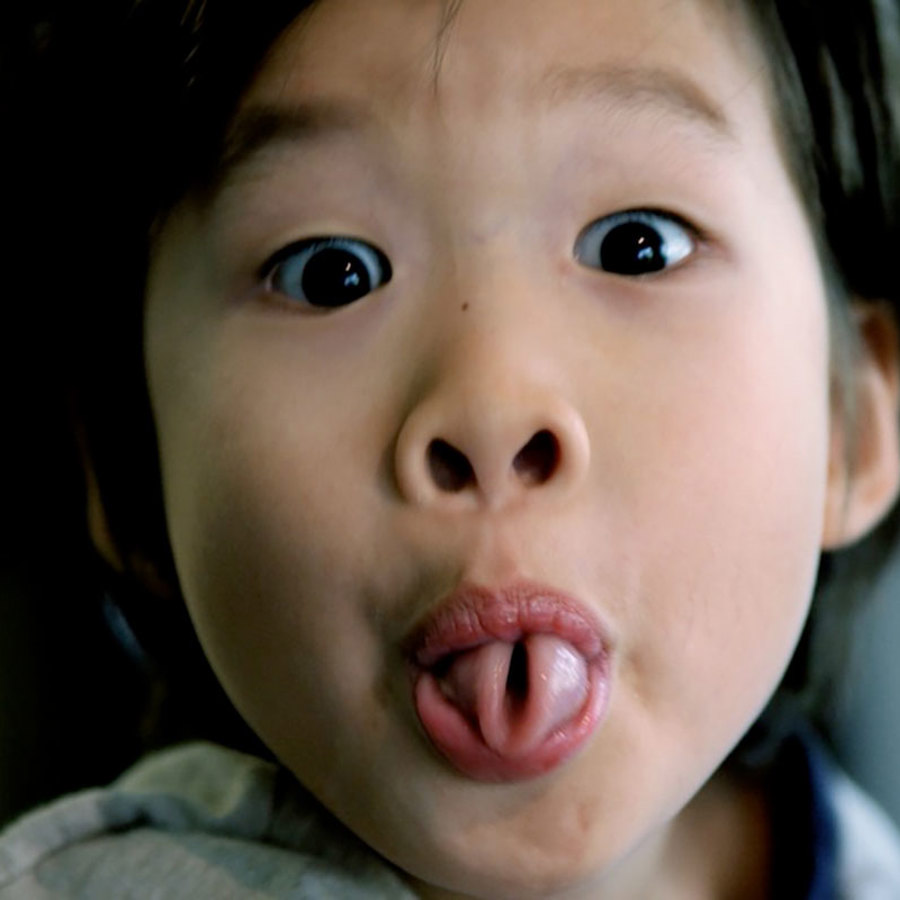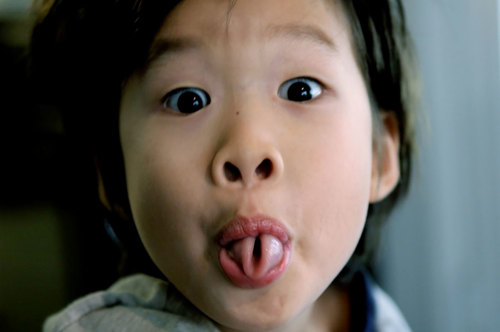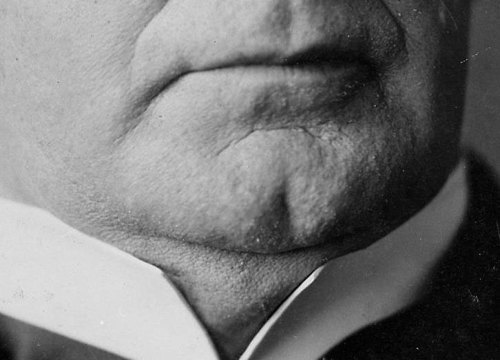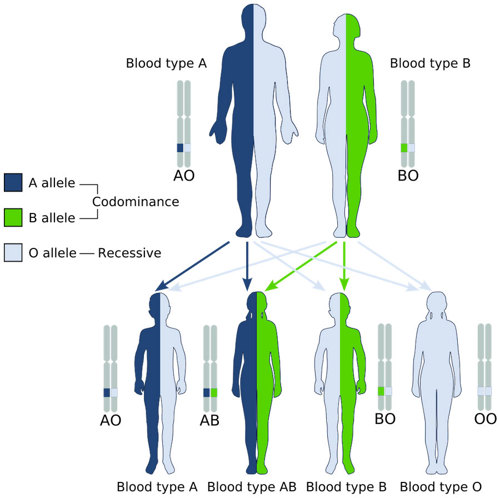
I’m concerned that my child doesn’t have traits I expected. Should I do a paternity test?
May 18, 2007

- Related Topics:
- Complex traits,
- Genetic myths,
- Paternity tests
A curious adult from Texas asks:
“I read the posting on how it is possible for 2 non-tongue rolling parents to have a child that can roll his tongue. Prior to reading your web site posting, I stumbled across an article in the April ’07 edition of Men’s Health. The article was discussing Paternal Discrepancy and stated that one of the tale-tell signs was tongue rolling.
I immediately started wondering about my own child. I have no other reason to doubt that I am not his biological father. Neither my wife nor I can roll our tongues, yet my child can. Most of my child’s other genetic traits are the same as mine, and my wife shares a lot of those as well, i.e. Blonde hair, blue eyes, etc ...
The article in Men’s Health said that 4% of fathers in the U.S. are unknowingly raising a child that is not theirs. I have not mentioned this to my wife, but it is keeping me up at night. Should I pay $100 for a paternity DNA test, or should I just not worry with it at all?”
None of the things you list give any cause for concern. I looked up the article you mentioned, and it brings up six different traits: tongue rolling, cleft chin, blood type, ear lobes, finger length and blonde hair.
I can't really comment on the 4% number (although even if true it does mean that 96% of us are raising our own children). But I can comment that those "tale-tell" signs are not as clear cut as they say in the article. Most of these are downright useless for predicting paternity.
Really, the only one that would raise a red flag for me is blood type. And even that isn't foolproof.
So please do not be concerned if your child can roll his or her tongue. This is no indication of paternity. Nor are most traits, really.
The only reliable way to determine paternity is with a paternity test. This is because nothing in genetics is absolute. All you have is what is more or less likely.
The Men’s Health article compares traits like these to tells in a game of poker. A tell is when a player does something that gives away the player's hand.
For example, let's say you notice that whenever Sally has a bad hand, she itches her nose. Now when she itches her nose, you know she's bluffing. The idea is that you can tell if you are not the father of your child if these certain traits don't line up right … if she itches her nose, it isn't your child. It is a very clever and enjoyable analogy. But the language they use make the traits sound much more clear cut than they are.
Even a tell in poker is not absolute. Maybe Sally just happened to itch her nose a couple of times during the game and they happened to be when she had a bad hand.
Now when you try to use the information about her tell against her, it doesn't work. You lose. Just like your own child might lose if you take these traits too seriously.
What I want to do is go over each of the traits they listed and debunk these supposedly ironclad rules. Some of the traits they mention are not signs of anything. They are more like urban legends. Others are more likely to raise a red flag. But even these are not for sure. So please be more careful than the language of the article would seem to indicate.


The Basics
Before going into each trait, let's go over some basics first. That way we will all be on the same page for when we start talking about each specific trait.
First off, we have two different copies of each of our genes -- one from mom and one from dad. Second, each of these copies can come in different forms (called alleles).
In some cases, one of the alleles is stronger than the other (“dominant”). If you have only one copy of the dominant allele, you will have that trait. It wouldn’t matter if you also have a copy of the weaker, “recessive” allele. You would only see the dominant version.
Red hair is a good example of this. The “red hair allele” is recessive to the dominant “not red” allele. If you have one of each, you will not have red hair. But you could pass the red hair DNA on to your child.
This is why two people without red hair can have a redheaded child. Or why two parents with brown eyes can have a blue eyed child. Or two brown-haired parents could have a blonde child. And the list goes on.
But there’s more than just that. Genetics is anything but black and white. It is all shades of gray.
The gray comes from at least two other things we need to remember:
1) Our genes do not work in a vacuum.
Our genes are affected by the environment … and all the other 25,000 or so genes in our cells.
The environment and all of these other genes can affect how our genes work. Sometimes, the same gene will work differently in different environments. You and your child have different experiences, different upbringings, different exposure to chemicals, maybe different diets growing up, etc. All of those things can make a difference.
And sometimes, genes work differently in the presence of other genes. You and your child don’t share exactly the same DNA. And that other DNA can also make a difference.
Let's take our example of two redheads. A person typically ends up with red hair when both copies of their MC1R gene don't work.
But imagine one parent has red hair because of a different gene. For example, maybe there is some other gene whose job it is to shut off the MC1R gene. Then that parent would have red hair even though his or her MC1R gene by itself would say no red hair.
Now that parent passes the working MC1R gene down to his or her kids without the other shut off gene. And guess what? These parents now have a kid without red hair. Even though it is "impossible."
2) Our genes are not set in stone. They can and do change.
This is where all the wonderful differences we see around us come from. And these changes are not confined to our past.
For example, 7 out of 8 cases of dwarfism happen because of a new change in the person's DNA. The parents carry no sign of the trait. But their child does.
The six “tells”
OK. Now we have a solid foundation to work from. Let’s get into the six traits the article mentions as “tells”: tongue rolling, cleft chin, blood type, ear lobes, finger length and blonde hair.
Tongue rolling
This is the worst of the lot. A study done way back when concluded that tongue rolling was a dominant trait (like brown eyes or not-red hair).
What this would mean is that two parents who couldn't roll their tongue could not have a tongue roller for a child. This is wrong.
As we have talked about before, further studies have shown that tongue rolling doesn't really follow this pattern. For example, identical twins, who share all of the same DNA, can't always both roll their tongues. In fact, one study showed they weren't any more likely to each be able to roll their tongue than any brother or sister.
If tongue rolling were a simple trait, identical twins should always match. But they don’t. So something else is going on here.
So if you have a tongue rolling child and you can't roll your tongue, this is not a cause for concern. Relax and enjoy your kid.
Cleft chin
Another bad example (although the article was a bit more careful in its language in this case). The article states:
Cleft Chin - While not as definitive as the other tells, "it's extremely rare for a child's chin to be cleft if both parents lack the trait," says Pond.
But this is another genetic myth. A child can have a cleft chin, even if neither parent has one.
This trait isn’t very well understood at the genetic level. It might be an example of something called “variable penetrance”. This means that someone can have the right gene but not have the trait.
Alternatively, there could be many genes that affect your chin. Or maybe something environmental can affect the trait. Like sometimes injury in the womb can keep a child's eye blue. Even if the child has the genes for brown eyes.
Overall, cleft chin wouldn't worry me too much. It certainly wouldn’t be a reliable way to confirm paternity!

Blonde hair
According to the article, two blonde haired parents can have only blonde haired children. This is not true.
This is because hair color is due to many genes and not one (click here for more details). In fact we don't understand hair color all that well. All sorts of things can affect hair color.
The hair color of children can darken over time. A child can be born with dark hair that turns light again. And then darkens again.
So hair color is not a particularly good tell for paternity either.
Ear lobes
The supposed tell is when parents with attached earlobes have a child with unattached earlobes. However, this is really terrible tell.
As we talk about here, the original studies have not held up over time. Parents with attached earlobes can have a child with unattached earlobes. And some people can have one of each earlobe!
I would not sweat my kid's ear lobes.
Finger length
The supposed tell is when both parents have a ring finger longer than the index and the child doesn't. Again, not something that holds up.
This trait also isn’t well understood. But we do know that finger length is definitely influenced by testosterone in the womb. For this reason, women tend to have an index and ring finger that are about the same length. Men tend to have a longer ring finger.
This difference is thought to happen because of the extra testosterone that men get in the womb. What in the world does that have to do with paternity?
Imagine a man has a child that gets less testosterone in the womb. Dad has a long ring finger and his son doesn't.
Cause for worry? No. The environment affected his finger length.
Blood type
This one is the only one on the list that would actually raise a red flag for me. Blood type is pretty predictable, and was even used as a rudimentary paternity test in the early 1900s!
Even so, there are exceptions. That makes it hard to read too much into blood type anomalies.
There are a few ways the blood type inheritance rules can be broken: chimerism, cis-AB blood type, Bombay blood group, mutation, and uniparental inheritance.
And don’t forget about good old fashioned laboratory errors. Mixups happen, and sometimes tests go wrong (especially for Rh type). It’s always worth double checking the results.


Only DNA is a good tell
So, what have we learned? Of all these tells, the only one that would concern me is blood type. Even though there are exceptions, they aren't all that common.
But the only really reliable tell is a DNA test. And even that can sometimes fail.
So don't freak out if your child can roll his or her tongue. This is not a good reason to have a paternity test done!

Author: Dr. D. Barry Starr
Barry served as The Tech Geneticist from 2002-2018. He founded Ask-a-Geneticist, answered thousands of questions submitted by people from all around the world, and oversaw and edited all articles published during his tenure. AAG is part of the Stanford at The Tech program, which brings Stanford scientists to The Tech to answer questions for this site, as well as to run science activities with visitors at The Tech Interactive in downtown San Jose.
 Skip Navigation
Skip Navigation
